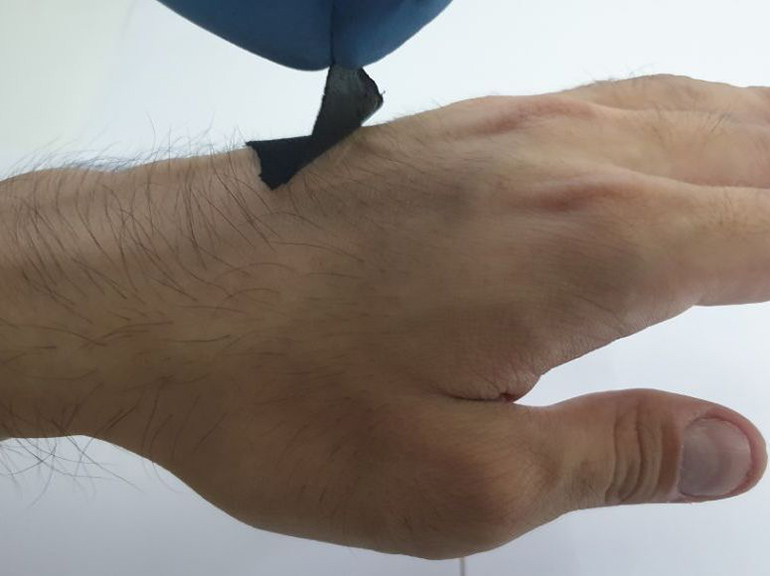
Researchers from Daegu Gyeongbuk Institute of Science and Technology (DGIST) in South Korea have developed a new waterproof, wearable biosensor that can stick to the skin in a unique way. Their work, recently published in ACS Applied Materials and Interfaces, demonstrates the biosensor adheres to the skin in wet and dry conditions and can monitor multiple biomedical signals, including the pulse at the radial artery of the arm and even basic electrocardiography (ECG). This is an exciting development for the biosensor field and can help lead to more effective and versatile biosensors.
Many wearable sensors need to make a good contact with the skin in order to work optimally. This means being flexible, staying attached when the skin is wet or dry, and working well even if there’s a lot of hair growing. Woven yarn is a typical substrate for wearable electronics, but it often doesn’t fully contact the user’s skin, especially if it is hairy. Adhesives can lose their grip when the skin is wet, so there’s been a search on for better methods. To address these limitations, the Korean researchers developed a low-cost graphene-based sensor that uses octopus-like suckers to adhere to the skin.
The technology is based on piezoresistance, which is a change in electrical resistance of the sensor compared to a change in its physical stretch. Graphene-coated fabric is the underlying piezoresistive material that was used in this study. In order to create the necessary micropatterns of the material, the researchers needed to have a soft, patternable surface on the device. To do this, they first added a layer of L-ascorbic acid to aid conductivity, then dipcoated the device to create a thin layer of graphene-embedded silicone. The graphene-embedded silicone layer of the device was then patterned with the octopus microsuckers, which are 10-20 microns in diameter, and help the device adhere to the skin in many different conditions.
Some of the key findings were that the device had repeatable measurements after 6,000 loading/unloading cycles, and has high sensitivity to low strain, the domain in which pulse signals can be felt. The researchers demonstrated that the biosensor can measure ECG signals in both wet and dry environments and that the radial artery pulse could be detected as well.
The publication in ACS Applied Materials and Interfaces: Water-Resistant and Skin-Adhesive Wearable Electronics Using Graphene Fabric Sensor with Octopus-Inspired Microsuckers
